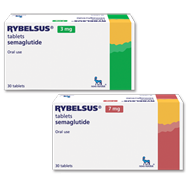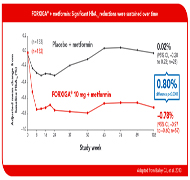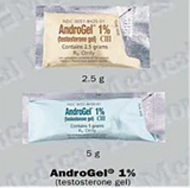MOUNJARO - August 2025
Tirzapatide, marketed as Mounjaro or Zepbound, is a combination of Glucagon-Like Peptide 1 Receptor Agonist and Gastro-intestinal Peptide (GIP). The addition of GIP enhances the potency of GLP1-RA (see Semaglutide). The enhanced efficiacy is shown by graph on the right. Detailed infomation on these agents may be accessed here.
How do the two medications compare? The BBC carried this on their website.
SEMAGLUTIDE - 16 June, 2022 - Wegovy 2025
Semaglutide was approved for prescription in Singapore October 2021, during the COVID-19 restrictions. Hence its introduction was a muted affair. Semaglutide is the latest offering in the Glucagon-Like Peptide 1 Receptor Agonist (GLP1-RA) class of medications used in the treatment of diabetes mellitus.
Known as OZEMPIC, semaglutide works by (1) increasing pancreatic insulin output (2) slowing gastric emptying, resulting in less food being eaten (3) altering brain chemistry to reduce craving for food.
This medication has an oral form (RYBELSUS) which is a benefit to needle-phobic patients. Wegovy is another preparation of semaglutide which is not currently available in Singapore.
On June 4, 2021 the US Food & Drug Administration approved Wegovy injection (2.4 mg weekly) for chronic weight managment in adults with obesity associated wth at least one weight-related condition. In a peer reviewed paper published in the New England Journal of Medicine, semaglutide treated participants lost - 14.9% of their body weight compared to -2.4% in the placebo treated group. The link to the paper is to be found here
On 22 November 2022, the New York Times published an article "What is Ozempic and Why Is It Getting So Much Attention?" The link to this article is to be found here
Wegovy was made available in Singapore late July 2025. It is Semaglutide 2.4 mg i.e Ozempic at a higher strength.



FREETYLE LIBRE - 20 Oct, 2017
Abbott has introduced FreeStyle Libre a device that allows diabetic patients to monitor their blood glucose without painful fingerpricks. The video shows how this device works. Without exception, all patients to whom I have introduced this technology, have found it enormously beneficial. Read about one patient's experence here. In 2019, the development of an app installable on cell phones removed the requirement for the reader.

THE ASIAN DIABETIC (eBook) - 23 May, 2015
Mr Matthew Pasterfield has writen a book on living with diabetes from the layman's perspective. It is an account of his personal journey from diagnosis to mastery of the condition. There are few books written with the Asian in mind; this is one of them. Having lived in Singapore for a decade, his insights apply to locals and diabetics in Far East. This link offers you a preview of the book, which is the brainchild of Mr Matthew Pasterfield.

DAPAGLIFLOZIN & CANAGLIFLOZIN - May 2014
Dapagliflozin (Forxiga) and Canagliflozin (Invokana) were approved for prescription to diabetics in May 2014. These are 2 members of a completely new class of medication availabe to diabetic patients whose control is less than optimal. The kidneys in response to these drugs, are inhibited from reabsorbing filtered glucose, which then is excreted in the urine. Up to 70 g of glucose may be excreted daily. The picture on right attests to the efficacy of such treatment. However, there are some potential issues including an increased risk of urinary sepsis and fungal infections of the female reproductive tract.

VICTOZA for DIABETES MELLITUS - 10 October, 2010
Liraglutide is a novel molecule which increases insulin secretion from the pancreas, while slowing gastric emptying. In carefully selected patients, a win-win situation of good glucose control without weight gain may be achieved. This is in marked contrast to almost invariable gain of body weight in patients treated with insulin. Presently, Victoza is available to patients upon application to the Health Sciences Authority. It is expected to be available for general prescription in the first quarter of 2011. Victoza is from NovoNordisk, a company with an impeccable track record in diabetes care.

ANDROGEL FINALLY ARRIVES - 1 July, 2010
Androgel is transdermal testosterone. It comes in sachets of 50 mg testosterone in 5 mL of gel. Allowing for a 10% absorption rate, the 5 mg that passes through the skin will supply the requirements of most men who are testosterone deficient. Without the need for needles, this form of androgen treatment may appeal to those who are needle phobic. Men on anticoagulant or anitplatelet medications in whom injections are contraindicated (for fear of bruising at the injection site) may also consider this. Check if you are testosterone deficient using this scorecard and see your doctor to discuss treatment if so.

CONCERNS REGARDING LANTUS USE - 1 July, 2009
The European Association for the Study of Diabetes has voiced concerns regarding the safety of insulin glargine. In its July issue of Diabetologia, 4 papers and an editorial relating to a possible link between insulin glargine (Lantus insulin) and cancer were published. EASD has recommended that glargine users with concerns not stop glargine but to consult with their doctors. The papers are available for download by going to the EASD website.

HYPERBARIC OXYGEN Therapy for DIABETIC FEET - 30 April, 2008
It is frightful to see patients with diabetes come in with feet such as the one shown in the top picture. In this patient, the ulcer on the big toe has not healed in six months, risking infection spreading up the foot or into the blood stream. The dusky color of the other toes is indication that they too are at risk of ulceration. These patients usually end up having to undergo surgery to remove a toe or part of the foot. This results in much morbidity and in problems walking. In carefully selected patients, hyperbaric oxygen therapy may offer a ray of hope. The treatment involves putting the patient into a chamber (not unlike decompression chambers used by divers who suffer "the bends") filled with oxygen under pressure. This environment allows better oxygen perfusion of the wound, and a possibility that surgery may be avoided. The lower picture used to show healing of the ulcer after 20 sessions of hyperbaric oxygen therapy. It cannot be displayed because the Ministry of Health's view is that it contravenes the Ministry's Publicity Regulations.


Shrinking LARGE THYROIDS with rhTSH & Radioiodine - 18 Nov, 2007
The usual treatment for LARGE thyroid glands such as the one on the right has been to use thyroxine medication or to have it surgically removed. Thyroxine use is rarely successful in large glands, whereas surgery can be expensive and may result in an ugly scar. Radioiodine has been shown to be exceptionally effective when combined with recombinant human thyroid stimulating hormone (rhTSH). In June 2007, Bonnema and co-investigators determined that median goiter volume reduced 34% in the group treated with radioiodine alone. In comparison, the group treated with radioiodine combined with rhTSH showed greater reduction of 53%. Local experience with this combined modality of treatment will grow as rhTSH (Thyrogen) has now become available in Singapore. As of today, two patients of mine have had this treatment both with excellent results.

INCRETIN and Type 2 Diabetes - 27 Jul, 2007
Incretins have long been known to play a role in blood glucose control. Januvia (sitagliptin, DPP4 inhibitor) and Byetta (exenatide, an incretin mimetic) are the newest medications targeting the incretin mechanism available for treatment of Type 2 diabetes. The former is orally active, the latter administered by injection. Locally, clinical experience with these agents is limited as they have only recently been approved for prescription in Singapore. In the light of controversy regarding Avandia (rosiglitazone) use and heart disease, these agents may be considered in patients deemed unsuitable for rosiglitazone. The video on the right is from the Eli Lilly company, explaining how Byetta works.

LEVEMIR - Long acting INSULIN - 1 Jan, 2007
LEVEMIR, Insulin Determir, is a long acting insulin that has achieved the holy grail of insulin therapy. It has answered the call for an insulin effective for 24 hours, without peaks which characterize the older insulins. This significantly reduces the risk of low blood glucose (hypoglycemia) in diabetic patients. NovoNordisk has on record that I am the the first doctor in Asia to use this preparation, which was approved for prescription in Singapore April 2006. My experience with Levemir has been nothing but positive.
![]()
PROTOS for OSTEOPOROSIS - 1 Oct, 2006
PROTOS (PROTELOS, in Europe) is Strontium ranelate, a novel class of medication recently approved for use in osteporosis. Like Like Fosamax (alendronate), Protos slows bone resorption, with the additional benefit of increasing bone formation. Protos may be safely used in patients intolerant of alendronate or as initial therapy for osteoporosis.

